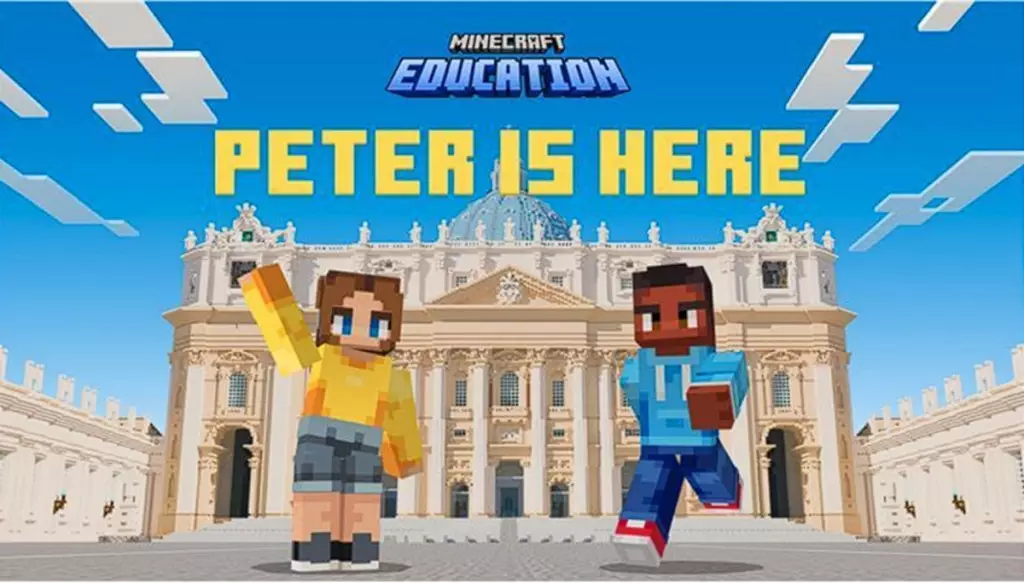St. Peter’s Basilica, a symbol of spiritual unity and architectural magnificence, has long been a focal point of history and culture. With intricate designs that reflect centuries of human ingenuity, it embodies the essence of heritage. Now, through an innovative partnership between the Vatican, Microsoft, and Minecraft Education, a groundbreaking initiative dubbed “Peter Is Here: AI for Cultural Heritage” invites students on an unprecedented journey into the realm of digital preservation. This program does not just teach students about the Basilica; it immerses them in the critical role of cultural stewardship, employing artificial intelligence (AI) as a central tool in the learning experience.
The advent of AI in education is not merely a trend but a fundamental shift in how students engage with the past. By offering a hands-on, interactive approach, Peter Is Here elevates students from passive learners to active participants in preserving history. This initiative exemplifies how technology can create a bridge between time-honored traditions and contemporary learning paradigms.
A Hands-On Approach to Historical Restoration
At the heart of Peter Is Here is its dual gameplay structure: Restoration Mode and Exploration Mode. In Restoration Mode, students assume the role of the Sanpietrini, the devoted team responsible for maintaining the Basilica. This gameplay mode is particularly effective in demonstrating the complexities involved in cultural preservation. As students engage with real restoration tasks—such as repairing mosaics, reinforcing iconic architectural elements, or ensuring that Bernini’s Baldachin remains steadfast—they grapple with the practical challenges faced by conservationists.
The integration of AI tools adds a layer of realism that empowers students to make informed decisions. They use simulated technologies like block scanners to assess structural integrity, which mirrors the methodologies employed in professional conservation. The decisions they make have immediate visual impacts in the game, instilling a sense of responsibility and consequence that translates into a deeper understanding of cultural heritage’s fragility.
Moreover, each restoration task is enveloped in historical context, setting the stage for rich, educational dialogues about architectural evolution and the stylistic nuances of different eras. This layered approach does not merely educate; it inspires curiosity and fosters a sense of connection to one’s cultural ancestry.
Exploratory Learning: Unveiling Hidden Histories
Transitioning to Exploration Mode, students transform into historians navigating the Basilica’s grand corridors and secluded corners. This mode is not just a journey through space but a dive into narratives that have shaped civilizations. With tools like the Smart Compass at their fingertips, learners fast-travel across diverse locations, uncovering artifacts and unraveling stories that chronicle the heritage of this monumental site.
The encounters with historical figures, whether it be Michelangelo offering insight on the frescoes or Bernini discussing his masterpieces, are not just gimmicks; they embody a method of contextual learning. These interactive sessions weave an intricate tapestry of history, making it palpable and engaging for students. By collecting digital artifacts and interacting with the environment, learners experience a narrative that is both multifaceted and relatable.
This blend of exploration and restoration creates a fertile ground for documenting newfound knowledge. The inclusion of tools such as the Book and Quill enables students to reflect on their journey actively. By comparing St. Peter’s Basilica with other historical landmarks, they understand the universal principles of cultural preservation, reinforcing the notion that history is not isolated but interconnected.
Empowering Future Generations Through Education
The educational experience embedded in Peter Is Here extends beyond the game. Contextual resources—including ready-to-use PowerPoints and workbooks—are available for educators, facilitating seamless integration into classroom curricula. Educators are equipped to guide students through discussions that explore not only the restoration efforts but also the broader implications of technology in cultural heritage preservation.
By embedding this program into the educational framework, students develop critical skills that transcend traditional learning. They engage in problem-solving, utilize digital tools, and foster a sense of community responsibility. Upon completion of their journey, students receive official certificates, symbolizing their role as honorary preservers of cultural heritage. This recognition reinforces the real-world impact of their learning, encouraging them to become advocates for conservation efforts in their communities.
The transformative potential of AI-driven education is exemplified in Peter Is Here—a project that illuminates not just cultural treasures but the paths we can forge for future generations. As the barriers between technology, history, and education dissolve, we see a clarion call for young minds to step forward as transformational stewards of our world. This initiative stands as a testament to the power of innovative thinking, ushering in a new era of learning that embraces the complexity of our shared heritage.


Leave a Reply
You must be logged in to post a comment.